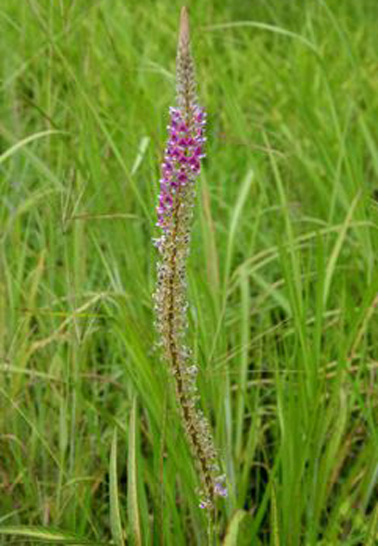|
Botanical Name:
Uraria picta
Prishnaiparni consists of dried whole plant of Uraria picta
Desv, Family Fabaceae
Common Name(s) in English & Indian Languages
Sanskrit: Citraparni, Kalasi, Dhavani, Prthakparni,
Shrigalavinna
Bengali: Salpani, Chhalani, Chakule
English: Indian Uraria
Guajarati: Pithavan
Hindi: Pithavan, Dabra
Kannada: Murele Honne, Ondele honne, Prushniparni
Malayalam: Orila
Marathi: Pithvan, Prushnipamee
Oriya: Prushnipamee, Shankarjata
Punjabi: Detedarnee
Tamil: Oripai
Telugu: Kolakuponna
Botanical description:
Occur in pieces of varying size, thickness of 1 to 2 cm,
gradually tapering, tough, woody, and cylindrical;
externally light yellow to buff, internally pale yellow;
surface bearing fine longitudinal striations; fracture,
splintery or fibrous; taste, slightly acrid.
Parts used:
Dried roots
Major chemical constituent:
Flavones, isoflavones, triterpenes and steroids
Therapeutic uses:
• Diarrhoea (Atisara)
• Emesis (Chardi)
• Burning sensation (Daha)
• Fever (Jvara)
• Cough (Kasa)
• Diarrhoea with blood (Rakatisara)
• Disorders of blood (Raktavikara)
• Asthma (Svasa)
• Mania (Unmada)
• Gout (Vatarakta)
• Ulcer (Vrana)
• Disease due to vata dosa (Vataroga)
• Bleeding piles (Rakarsa) |
|
 |
|
|



